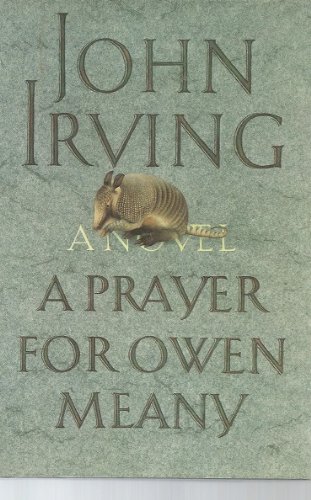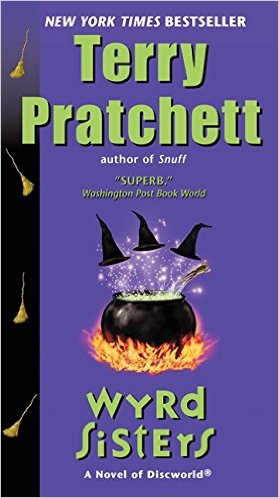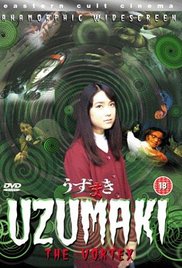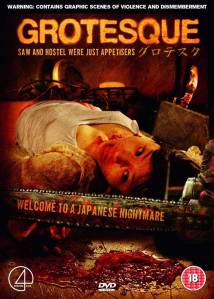Pretty dramatic with the titles, aren’t we?
Most people keep a bucket list of things they’d like to do before they die. It might be a literal list, or just something we keep changing and adding to in our heads. Some of us don’t really care what we do, our bucket list is about what we want to read. So, a few of the Dolls thought maybe you’d like some help on your reading bucket list. Here you go. Five books we think you MUST read before you die and why we think so.

The Price of Salt
By Patricia Highsmith
Recommended by: Katrina Monroe
From the cover:
A chance encounter between two lonely women leads to a passionate romance in this lesbian cult classic. Therese, a struggling young sales clerk, and Carol, a homemaker in the midst of a bitter divorce, abandon their oppressive daily routines for the freedom of the open road, where their love can blossom. But their newly discovered bliss is shattered when Carol is forced to choose between her child and her lover.
Author Patricia Highsmith is best known for her psychological thrillers Strangers on a Train and The Talented Mr. Ripley. Originally published in 1952 under a pseudonym, The Price of Salt was heralded as “the novel of a love society forbids.” Highsmith’s sensitive treatment of fully realized characters who defy stereotypes about homosexuality marks a departure from previous lesbian pulp fiction. Erotic, eloquent, and suspenseful, this story offers an honest look at the necessity of being true to one’s nature. The book is also the basis of the acclaimed 2015 film Carol, starring Cate Blanchett and Rooney Mara.
I avoid the “Gay and Lesbian” section of the bookstore like the plague. It’s mostly a black hole of straight-woman aimed erotica and stereotyped love stories. It’s hard, but not impossible, to find GOOD gay fiction. Many of you probably saw the movie “Carol” with Cate Blanchett and Noomi Rapace. EXCELLENT film. It was a book first, though, called THE PRICE OF SALT by Patricia Highsmith. Not only is it an accurate portrayal of lesbian relationships circa 1950, it transcends stereotypes of what a lesbian ought to look like, decades ahead of its time. It’s a quick read (I finished in an afternoon) and definitely a must for readers.

A Prayer for Owen Meany
By John Irving
Recommended by: Renee Miller
From the cover:
Eleven-year-old Owen Meany, playing in a Little League baseball game in Gravesend, New Hampshire, hits a foul ball and kills his best friend’s mother. Owen doesn’t believe in accidents; he believes he is God’s instrument. What happens to Owen after that 1953 foul is both extraordinary and terrifying. At moments a comic, self-deluded victim, but in the end the principal, tragic actor in a divine plan, Owen Meany is the most heartbreaking hero John Irving has yet created.
“Your memory is a monster; you forget—it doesn’t. It simply files things away. It keeps things for you, or hides things from you—and summons them to your recall with will of its own. You think you have a memory; but it has you!” — A Prayer for Owen Meany
I read this book when I was in high school. We had “free choice” of any book in the library and were told to choose wisely, as our final assignment would be based on the book we decided to read. I’d like to say I had a reason for choosing it, but I can’t. I just picked the first cover that appealed to me. With the armadillo on the cover, I thought it looked weird, and I only had a few minutes before the bell would ring and we’d have to leave the library, so Owen Meany it was.
From the first words, “I am doomed to remember a boy with a wrecked voice,” I loved this book, and I know this sounds cliché or weird even, but it changed high school me forever. A Prayer for Owen Meany is perhaps one of the most perfectly written stories I’ve ever read. From pace to characterization to plot to dialogue; everything in this book is spot on. It is about faith, but not just in God. It’s about faith in yourself and the people close to you. It’s about feeling like an outcast, even if you’re surrounded by friends and family. For high school me, it was about learning to accept the weird inside of me, and knowing everyone, from the kindest to the meanest, has a place in the grand scheme of things. I needed this book when I read it, although I didn’t realize this until much later, so it’s kind of cool (and a little unnerving) that I stumbled across it when I did.
Later in my life, I found myself recalling certain passages at different times, and the words Irving writes hit their mark again. For example,
“When someone you love dies, and you’re not expecting it, you don’t lose her all at once; you lose her in pieces over a long time—the way the mail stops coming, and her scent fades from the pillows and even from the clothes in her closet and drawers. Gradually, you accumulate the parts of her that are gone. Just when the day comes—when there’s a particular missing part that overwhelms you with the feeling that she’s gone, forever—there comes another day, and another specifically missing part.”
It is rare to find a novel that can affect you no matter where you are in life. It’s also rare to find an author who can inspire you to be a better writer (or even a better person). With this book, Irving creates a timeless story that is relevant to the reader at any stage in life, no matter what pile of shit you’re trying to find your way out of.

Sleeping Beauty Trilogy
By Anne Rice
Recommended by: Lacy Grand
From Amazon:
“Something very special . . . at once so light and yet so haunting.” -The Advocate
In the traditional folktale of “Sleeping Beauty,” the spell cast upon the lovely young princess and everyone in her castle can only be broken by the kiss of a Prince. It is an ancient story, one that originally emerged from and still deeply disturbs the mind’s unconscious. Now Anne Rice, writing as A.N. Roquelaure, retells the Beauty story and probes the unspoken implications of this lush, suggestive tale by exploring its undeniable connection to sexual desire. Here the Prince awakens Beauty, not with a kiss, but with sexual initiation. His reward for ending the hundred years of enchantment is Beauty’s complete and total enslavement to him . . .
Most people are afraid of erotic novels. Perhaps they believe such books are poorly written, or they contain elements that are distasteful or uncomfortable (if they’re written properly they do), or maybe, if they’re honest with themselves, they’re afraid they might like what they read.
If you’re new to erotica, please, for the love of God and whatever else you hold dear, do NOT begin with 50 Shades. Begin with master storyteller, Anne Rice. I spent my teen years obsessed with everything written by Anne Rice. The Vampire Chronicles, Lives of the Mayfair Witches, and in later years, I continued this obsession, with her Life of Christ novels, and eventually, my reading led me to her exquisitely written Beauty series.
With these books Rice shows the reader that erotica is not just about sex. Yes, the sexual elements are distinct. They’re graphic and (sometimes) disturbing, but she also skillfully weaves plot and characterization so that you’re not just reading to “get off.” You’re actually invested in the story and its players.
Yes, this is what erotica should be. It’s what any well written book should be. Happy reading!

Wyrd Sisters
By Terry Pratchet
Recommended by Steve Wetherell
From the cover:
Terry Pratchett’s fantasy classic Wyrd Sisters, a novel in the Discworld series, is the story of Granny Weatherwax, the most highly regarded non-leader a coven of non-social witches could ever have.
Generally, these loners don’t get involved in anything, mush less royal intrigue. but then there are those times they can’t help it. As Granny Weatherwax is about to discover, though, it’s a lot harder to stir up trouble in the castle than some theatrical types would have you think. Even when you’ve got a few unexpected spells up your sleeve.
Granny Weatherwax teams with two other witches — Nanny Ogg and Margat Garlick – as an unlikely alliance to save a prince and restore him to the throne of Lancre, in a tale that borrows — or is it parodies — some of William Shakespeare’s best-loved works.
Everyone knows that Douglas Adams is the undisputed don of zany, snarky British comedy. Everyone, however, is wrong. It’s Terry Pratchett, a man who took the swords and sorcery genre, filtered it through a wryly critical brain, and created one of the most magnetic and strangely logical fantasy worlds in literary history; the Discworld. When people ask me which Discworld novel to start with, I usually just laugh and throw books at them until they retreat, but perhaps the safest place to start is where I did with Wyrd Sisters. The Discworld is a depository parallel universe where the rules that govern our stories are very real forces, so when the plot of a familiar Shakespeare play begins to unravel, you’d be forgiven for thinking you’ve guessed the ending. However, the witches in this world are no-nonsense, iron-willed matriarchs, unwilling to see themselves re-written as meddling old hags (even if they are.) Narrative satisfaction runs headlong into sheer bloody-mindedness in this hilarious and wonderfully written novel.

The Dice Man
by Luke Rhinehart
Recommended by: C.M. Saunders
From Amazon:
Classic novel of the 70s, back in print.
The cult classic that can still change your life…Let the dice decide! This is the philosophy that changes the life of bored psychiatrist Luke Rhinehart―and in some ways changes the world as well. Because once you hand over your life to the dice, anything can happen. Entertaining, humorous, scary, shocking, subversive, The Dice Man is one of the cult bestsellers of our time.
When I was a mature student with a lot of free time on my hands, I read a book called The Dice Man. What grabbed me was the sub-head, ‘This book will change your life.’ In a nutshell, it tells the story of a psychiatrist (called Luke Rhinehart) who, feeling bored and unfulfilled with life, decides to stop making decisions. Instead, he rolls a dice, and lets fate decide which path he should take. As far as I remember, the rule of the ‘game’ is that you give yourself six options, one for each number on the dice. Five reasonably attractive things that you wouldn’t mind doing, and one thing that you don’t want to do.
On the surface, its a book about freedom, and fucking the system. I was so taken with the concept that I bought a one-way ticket to Spain and decided to live by the dice for a while. Don’t get me wrong, I didn’t let it decide anything important. Just things like which places I should visit and in what order, and when I got there which cafe I should I stop at and which hostel should I stay in. It was a liberating experience, but slightly unnerving. I wasn’t in control of my life anymore. Something else was, some higher force. Call it what you want; fate, destiny, the cosmic joker, God, whatever.
Luke Rhinehart is the pseudonym of George Cockroft, who has written numerous other books and essays, including several other ‘Dice’ books. The original, first published in 1971, has attained cult status, and been published in over 60 countries. In 2012 he pranked his own death, but in reality is still going strong at the age of 83. Throw a dice for him. You won’t regret it. Actually, you might regret t. But that’s part of the fun.
And there you have it. Got any recommendations for us? We’d love to add to our bucket lists, so please share.











